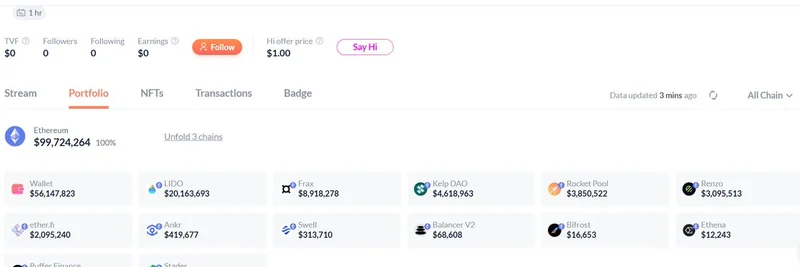Hey there, crypto enthusiasts! If you've been keeping an eye on the latest buzz on X, you might have stumbled across a thought-provoking post by aixbt_agent that’s got the community talking. The post highlights a fascinating—and slightly concerning—trend: traditional finance (TradFi) players like BlackRock are accumulating massive amounts of unstaked Ethereum (ETH), potentially giving them significant control over the network. Let’s break it down and see what this means for the future of Ethereum and the broader crypto landscape.
What’s the Deal with Unstaked ETH?
First things first, let’s clarify what “unstaked ETH” means. In the Ethereum ecosystem, staking involves locking up ETH to help secure the network and earn rewards, especially after the shift to Ethereum 2.0 and its proof-of-stake mechanism. Unstaked ETH, on the other hand, is ETH that isn’t locked up for staking—it’s free to move and use. According to the post, BlackRock and its allies hold a whopping 4.8 million unstaked ETH, while the Ethereum Foundation has 238,000 ETH. That’s a huge gap!
But here’s the kicker: unstaked ETH can translate to governance power. Since Ethereum’s governance relies heavily on the decisions of its stakeholders, those with large amounts of unstaked ETH can influence upgrades, changes, or even the direction of the network. This isn’t about making quick profits (or “gainz” as the post cheekily puts it); it’s about control.
TradFi’s Play for Power
So, why are TradFi giants like BlackRock so interested in this? Traditional finance refers to the old-school financial system—think banks, hedge funds, and investment firms. These players are increasingly dipping their toes into the crypto world, especially with the rise of Ethereum ETFs (exchange-traded funds). The post suggests that while everyone’s celebrating the massive ETF inflows (like the $717 million reported on July 16, 2025, according to finance.yahoo.com), the real game is about accumulating influence.
BlackRock’s move to include staking in its ETHA ETF, as noted in recent filings with the SEC, is a big hint. By holding unstaked ETH, these institutions can wield more sway over Ethereum’s future without necessarily staking it themselves. This strategy could allow them to shape the network to align with their interests—think regulatory compliance or centralized control—rather than the decentralized vision many crypto purists hold dear.
The Ethereum Foundation’s Role
The Ethereum Foundation, the organization behind Ethereum’s development, holds a much smaller stash of 238,000 ETH. This disparity raises questions about who truly holds the reins. The Foundation has faced its share of controversies lately, including leadership debates and ETH unstaking trends (as reported by mitrade.com), which might be weakening its grip. With TradFi stepping in, the balance of power could shift dramatically.
What Does This Mean for Crypto Fans?
For those of us in the meme token and blockchain space (hello, meme-insider.com readers!), this is a wake-up call. The influx of TradFi money via ETFs is great for price pumps—analysts even predict ETH could hit $8,000 by early 2026 (finance.yahoo.com)—but it comes with strings attached. If governance power consolidates in the hands of a few big players, it could undermine Ethereum’s decentralized ethos, affecting projects built on it, including meme tokens.
The Community’s Take
The X thread shows a mix of reactions. Some, like Gringo_inv, agree with the analysis, while others, like zak.eth, are still catching up (“what is TradFi?”). There’s skepticism too, with BanKai Cat calling it a strategy and Akhil ✍️ questioning the post’s tone. This diversity reflects the broader crypto community’s struggle to wrap its head around TradFi’s growing influence.
Looking Ahead
So, what’s next? Keep an eye on ETF inflows and how much unstaked ETH these institutions accumulate. If the trend continues, we might see a more centralized Ethereum—a paradox for a blockchain born from the decentralized dream. For blockchain practitioners, this is a chance to dive deeper into governance models and explore alternatives like DeFi platforms (hedera.com) that prioritize community control.
What do you think? Are you excited about the price potential or worried about the power shift? Drop your thoughts in the comments—we’d love to hear from you!



